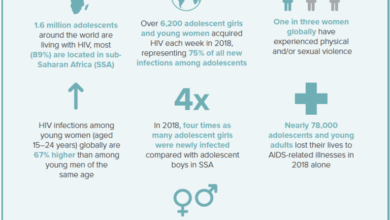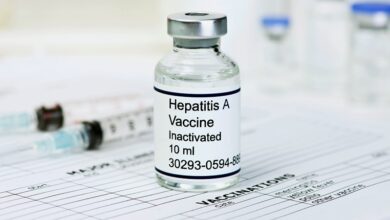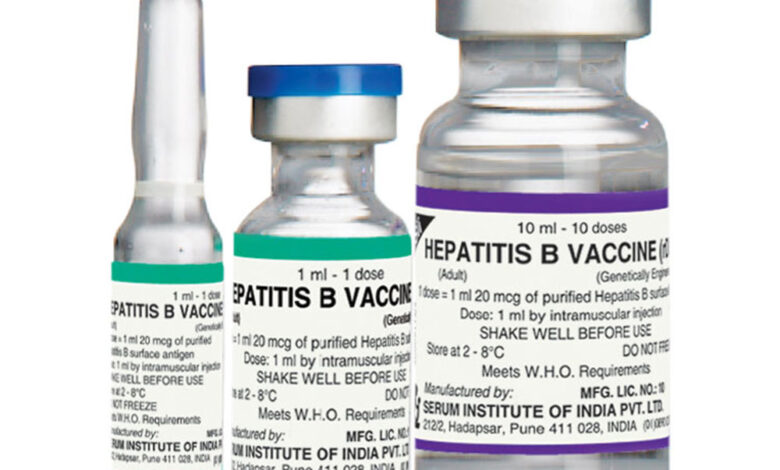
Infections hepatitis b vaccines are crucial for global health. This comprehensive exploration delves into the science behind these life-saving inoculations, examining the intricacies of hepatitis B infections, the mechanisms of vaccine action, and the importance of vaccination strategies worldwide. Understanding the prevalence, transmission, and long-term implications of hepatitis B is essential to appreciate the impact of vaccination efforts.
We’ll also cover vaccine administration, safety precautions, and emerging trends in vaccine technology.
From understanding the different types of hepatitis B vaccines and their efficacy to exploring vaccination schedules and safety profiles, this article will provide a detailed overview. We’ll examine the various stages of hepatitis B infection and how vaccines help prevent these stages. Furthermore, we’ll investigate the impact of vaccines on vulnerable populations and the role of vaccination programs in public health.
Overview of Hepatitis B Infections
Hepatitis B is a viral infection that primarily affects the liver. Understanding its transmission, symptoms, and long-term implications is crucial for prevention and effective management. This comprehensive look at hepatitis B will explore its various facets, from its prevalence globally to the differences between acute and chronic forms.Hepatitis B infection, caused by the hepatitis B virus (HBV), can range from a mild, short-term illness to a severe, long-lasting condition.
Its transmission primarily occurs through contact with infected blood, body fluids, or contaminated needles. Early detection and intervention are key to managing the infection and preventing potential long-term complications.
Transmission of Hepatitis B
The hepatitis B virus (HBV) spreads through contact with the blood or other bodily fluids of an infected person. This can happen through various routes, including unprotected sexual contact, sharing needles or other drug paraphernalia, and perinatal transmission from mother to child during childbirth. Contaminated blood products also pose a significant risk. These routes highlight the importance of safe practices to prevent infection.
Symptoms of Hepatitis B
Symptoms of hepatitis B can vary widely, and some individuals may not experience any noticeable symptoms, especially during the initial stages. Common symptoms include fatigue, nausea, vomiting, abdominal pain, loss of appetite, jaundice (yellowing of the skin and eyes), dark urine, and light-colored stools. These symptoms can range in severity, and it’s important to note that their absence does not necessarily mean the infection isn’t present.
Early diagnosis is crucial for effective treatment and management.
Protecting against infections like hepatitis B through vaccines is crucial. However, navigating complex healthcare decisions, like those surrounding death with dignity laws in the Trump era, death with dignity laws in trump era can significantly impact public health choices. Ultimately, access to preventative care, including hepatitis B vaccines, remains vital.
Long-Term Health Implications of Untreated Hepatitis B
Untreated hepatitis B infection can lead to serious long-term health complications, including cirrhosis (scarring of the liver) and liver cancer. Chronic hepatitis B can gradually damage the liver over time, eventually leading to its failure. These severe outcomes underscore the critical need for early diagnosis and treatment to prevent irreversible liver damage. For example, a person with untreated hepatitis B could develop cirrhosis, significantly impacting their quality of life and potentially requiring a liver transplant.
Prevalence and Global Impact of Hepatitis B
Hepatitis B is a significant global health concern, affecting millions worldwide. It is a major cause of liver disease and liver cancer. The prevalence varies geographically, with certain regions experiencing higher rates of infection. The global impact highlights the need for widespread vaccination programs and access to treatment to combat this disease effectively. For example, in certain regions of Africa, hepatitis B infection is endemic, requiring targeted interventions to reduce the burden of disease.
Acute vs. Chronic Hepatitis B
Acute hepatitis B is a short-term infection that usually resolves on its own. Chronic hepatitis B, on the other hand, is a long-term infection that can persist for years and potentially lead to serious complications like cirrhosis and liver cancer. The distinction between acute and chronic forms is vital for appropriate management strategies.
Stages of Hepatitis B Infection
| Stage | Description | Symptoms |
|---|---|---|
| Incubation Period | The time between infection and the appearance of symptoms. | Typically asymptomatic, although some may experience mild flu-like symptoms. |
| Acute Hepatitis B | The initial phase of infection, characterized by inflammation of the liver. | Symptoms can range from mild to severe, including jaundice, fatigue, and abdominal pain. |
| Chronic Hepatitis B | A persistent infection that lasts for six months or longer. | Symptoms may be mild or absent, but the infection can cause liver damage over time. |
| Cirrhosis | Advanced liver scarring. | Symptoms may include fatigue, jaundice, abdominal swelling, and ascites. |
| Liver Cancer | Cancer of the liver, often a consequence of long-term hepatitis B infection. | Symptoms can vary depending on the stage of cancer, but may include abdominal pain, weight loss, and jaundice. |
Hepatitis B Vaccines: Infections Hepatitis B Vaccines
Protecting yourself and loved ones from hepatitis B is crucial. Vaccination is the most effective way to prevent this potentially serious liver infection. This comprehensive look at hepatitis B vaccines will detail their mechanisms, types, efficacy, and importance in preventing the disease.Hepatitis B vaccines have proven to be a vital tool in global public health initiatives. Their high efficacy and safety profiles have significantly reduced the incidence of hepatitis B infection in many parts of the world.
Mechanisms of Action
Hepatitis B vaccines do not contain live hepatitis B virus. Instead, they use either inactivated or recombinant viral proteins to stimulate the body’s immune system. This exposure triggers the production of antibodies, specifically targeting the surface antigen (HBsAg) of the virus. These antibodies are crucial for preventing the virus from entering and infecting liver cells.
The immune response elicited by the vaccine prepares the body to effectively fight off a real hepatitis B infection if encountered.
Types of Hepatitis B Vaccines and Formulations
Several types of hepatitis B vaccines are available, each with slightly different formulations. These variations primarily affect the antigen used, the production method, and the adjuvant (if any).
- Recombinant vaccines are the most common type. These vaccines utilize genetically engineered yeast cells to produce the hepatitis B surface antigen (HBsAg). The process avoids the use of human or animal tissue, contributing to safety and cost-effectiveness. Recombinant vaccines are highly effective in eliciting a robust immune response.
- Plasma-derived vaccines were previously more prevalent but are now less common. These vaccines use purified HBsAg from the blood plasma of infected individuals. While effective, they pose a theoretical risk of transmitting other blood-borne pathogens, a concern that recombinant vaccines largely address.
Efficacy and Safety Profiles
Hepatitis B vaccines demonstrate a high degree of efficacy, with studies showing that they can prevent infection in over 95% of individuals who complete the vaccination series. The safety profile is generally excellent, with common side effects being mild and temporary, such as soreness or redness at the injection site.
- Safety concerns are generally limited to minor local reactions, which are usually easily managed. Severe allergic reactions are rare but are possible. Individuals with known allergies or immune deficiencies should consult their physician before receiving the vaccine.
Importance of Completing the Vaccine Series
The full vaccination series, typically involving multiple doses over several months, is essential for optimal protection. Each dose builds upon the previous one, gradually strengthening the immune response.
- Incomplete series may result in reduced antibody levels, potentially diminishing protection against hepatitis B infection.
Vaccine Schedules for Different Age Groups
The recommended vaccination schedules vary slightly depending on the age of the recipient. This is crucial for ensuring appropriate immune system development and optimal protection.
| Age Group | Vaccine Schedule |
|---|---|
| Infants (birth to 6 months) | Typically 3 doses over 6 months |
| Children (6-11 years) | Typically 3 doses over 6 months |
| Adolescents and Adults | Typically 3 doses over 6 months |
Vaccine Administration and Safety
Administering hepatitis B vaccines safely and effectively is crucial for preventing the spread of this potentially serious infection. Proper procedures, understanding potential side effects, and meticulous handling of the vaccine are paramount to ensuring a positive patient experience and achieving optimal protection. This section delves into the detailed aspects of vaccine administration and safety protocols.The success of any vaccination program hinges on adherence to strict protocols.
This section Artikels the necessary steps for safe and effective hepatitis B vaccine administration, while also addressing potential side effects and post-vaccination monitoring procedures. By understanding these crucial elements, healthcare providers can confidently administer the vaccine, minimize risks, and maximize the benefits for patients.
Vaccine Administration Procedure
The hepatitis B vaccine is typically administered intramuscularly, usually in the deltoid muscle of the upper arm. A sterile needle and syringe are essential for each injection. Proper aseptic technique should be meticulously followed to prevent contamination. The injection site should be palpated and marked before injection. After injection, gentle pressure is applied to the site for a few seconds to minimize bleeding and bruising.
Documentation of the administration date, lot number, and dosage is critical for tracking purposes and potential future reference. The process should always be carried out by a qualified healthcare professional.
Potential Side Effects and Management
Mild side effects, such as pain, redness, or swelling at the injection site, are common after hepatitis B vaccination. These reactions usually resolve within a few days. If more severe reactions arise, such as fever, rash, or difficulty breathing, immediate medical attention should be sought. Monitoring for these reactions post-vaccination is crucial. Information on managing potential side effects should be provided to patients at the time of vaccination.
Protecting against infections like hepatitis B through vaccines is crucial. But, a recent study, exploring the best approaches for weight loss in those with depression , highlights the complex interplay between mental health and physical well-being. Ultimately, vaccinations remain a key component in preventing these infectious diseases.
Importance of Proper Storage and Handling
Proper storage and handling of hepatitis B vaccines are critical to maintaining their potency. Vaccines should be stored at a specific temperature range to prevent degradation. Incorrect storage can compromise the vaccine’s efficacy, rendering it ineffective against the hepatitis B virus. Strict adherence to recommended storage guidelines is crucial. Vaccines should be protected from light and extreme temperatures.
Proper labeling and rotation of vaccine vials are essential to maintain their quality and usability.
Monitoring for Adverse Reactions Post-Vaccination, Infections hepatitis b vaccines
Monitoring for adverse reactions after hepatitis B vaccination is essential to identify and address any potential complications promptly. Healthcare providers should inquire about any unusual symptoms experienced by patients in the days following vaccination. This includes symptoms like fever, allergic reactions, or severe pain at the injection site. Patients should be advised to report any concerning symptoms immediately.
Maintaining detailed records of vaccination dates and any subsequent reactions is important for future reference.
Vaccine Storage Requirements
| Environment | Temperature Range | Storage Duration |
|---|---|---|
| Refrigerator | 2°C to 8°C | Up to 2 years |
| Controlled Room Temperature | 15°C to 25°C | Up to 6 months |
The table above summarizes the recommended storage requirements for hepatitis B vaccines. Proper adherence to these temperature ranges is essential to maintaining the vaccine’s efficacy. Maintaining a consistent temperature is crucial for ensuring vaccine safety and effectiveness. Failure to adhere to these guidelines could lead to a compromised vaccine, rendering it ineffective against the hepatitis B virus.
Hepatitis B Vaccination Strategies and Public Health Implications
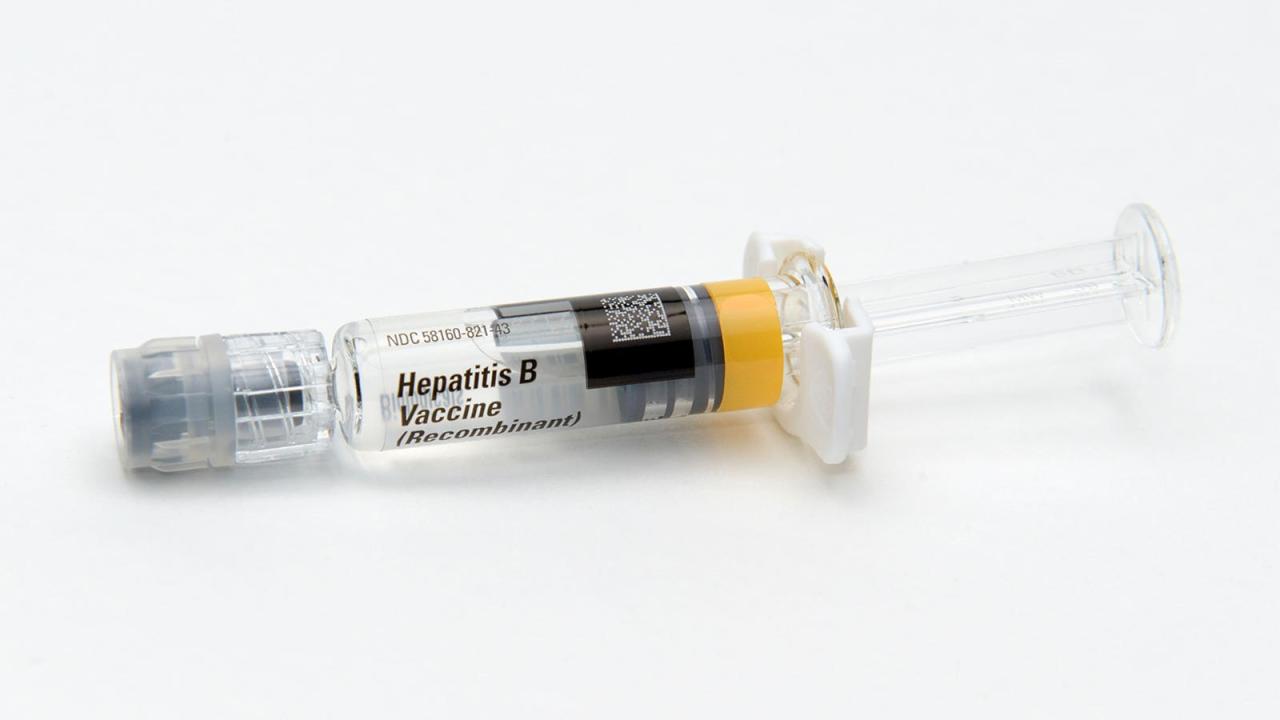
Global efforts to combat hepatitis B have significantly reduced its prevalence, largely attributed to the widespread implementation of vaccination programs. These programs, tailored to specific regional needs and challenges, have demonstrated a powerful impact on public health, showcasing the effectiveness of preventive measures. The sustained success of these initiatives hinges on the continued commitment to vaccination, particularly within vulnerable populations.Effective vaccination strategies not only prevent individual infections but also curtail the spread of hepatitis B within communities, ultimately contributing to a healthier population.
By identifying and addressing specific risks associated with transmission, these strategies can be meticulously designed to target vulnerable groups, thereby maximizing their impact.
Global Vaccination Programs
Vaccination programs have been implemented globally with varying degrees of success, reflecting the diverse contexts and challenges faced by different nations. These programs are often integrated into national immunization schedules, ensuring routine vaccination of infants and children. Furthermore, catch-up campaigns target adults at risk, including those who may have missed initial vaccination opportunities. These efforts aim to achieve high vaccination coverage, creating a strong barrier against the transmission of hepatitis B.
Vaccination Strategies for Vulnerable Populations
Identifying and addressing the specific needs of vulnerable populations is crucial for optimizing the effectiveness of vaccination strategies. This involves tailoring vaccination programs to reach marginalized communities, including those with limited access to healthcare, those in prisons, and those engaging in high-risk behaviors. Cultural sensitivity and community engagement are key components in these efforts. Tailored educational materials and accessible vaccination locations are important considerations.
Furthermore, providing vaccination incentives and resources for individuals facing socioeconomic barriers can improve vaccination rates within these groups.
Role of Vaccination in Preventing Community Transmission
Vaccination plays a vital role in preventing hepatitis B transmission within communities. By achieving high vaccination coverage, the risk of outbreaks and the spread of the virus is significantly reduced. A high proportion of vaccinated individuals creates a protective barrier, making it less likely for the virus to circulate. This approach has proven effective in controlling hepatitis B epidemics and maintaining community health.
Economic Benefits of Vaccination Programs
The economic benefits of hepatitis B vaccination programs are substantial. By preventing the long-term health complications and associated healthcare costs associated with hepatitis B, these programs can lead to significant savings in the healthcare system. Reduced absenteeism from work due to illness also contributes to the economic gains. Moreover, the economic burden of liver disease and liver cancer, often linked to hepatitis B, is lessened by preventive vaccination strategies.
Vaccination Coverage Rates by Region
| Region | Vaccination Coverage (%) | Year |
|---|---|---|
| North America | 95 | 2022 |
| Western Europe | 92 | 2022 |
| Eastern Europe | 80 | 2022 |
| South America | 88 | 2022 |
| Africa | 70 | 2022 |
| Asia | 85 | 2022 |
Note: Data is indicative and may vary based on specific country and region.
Hepatitis B Infections and Vaccines
Hepatitis B, a viral infection affecting the liver, poses a significant global health concern. While many individuals recover from acute infection, a substantial portion develop chronic hepatitis B, leading to serious long-term health complications, including liver cirrhosis and liver cancer. The development and widespread implementation of hepatitis B vaccines have dramatically altered the landscape of this disease, significantly reducing its prevalence and impact.
This section delves into the comparisons and contrasts between hepatitis B infections and the effectiveness of vaccines in preventing them.Hepatitis B vaccines have proven remarkably successful in preventing chronic infection, offering substantial protection against the virus. Their impact is evident in reduced rates of chronic hepatitis B globally, demonstrating the critical role vaccines play in public health.
Effectiveness of Hepatitis B Vaccines in Preventing Chronic Infection
Hepatitis B vaccines are highly effective in preventing infection and, critically, the progression to chronic hepatitis B. Studies consistently show that vaccination significantly reduces the risk of developing chronic hepatitis B, particularly in susceptible populations like infants. The effectiveness of the vaccine is measured by its ability to induce an immune response that neutralizes the hepatitis B virus.
Getting vaccinated against hepatitis B infections is crucial, especially for young adults. While focusing on overall health, it’s important to remember that factors like obesity can impact health behaviors. For example, some studies suggest a correlation between being overweight and increased likelihood of binge eating in young adults, as detailed in this study overweight young adults likely to binge.
Ultimately, preventative measures like hepatitis B vaccines remain vital in safeguarding public health.
This immune response is usually long-lasting, providing substantial protection against future infection.
Long-Term Effects of Hepatitis B Vaccines
The long-term effects of hepatitis B vaccines are generally considered safe and minimal. The vaccines utilize inactivated viral components or recombinant viral proteins, stimulating the immune system without causing the disease itself. Rare side effects, such as mild pain or swelling at the injection site, are usually temporary. The long-term benefits of vaccination, including the prevention of chronic hepatitis B and its associated complications, far outweigh any potential risks.
Use of Vaccines in Specific Populations
Vaccination strategies target specific populations at high risk of infection or exposure. Infants are prioritized for vaccination due to their vulnerability and the potential for lifelong protection. Healthcare workers are also included in vaccination programs to protect them from occupational exposure to the virus. Travelers to regions with high rates of hepatitis B transmission are advised to be vaccinated to reduce their risk of infection.
Examples of Reduced Hepatitis B Infection Rates in Specific Countries
Significant reductions in hepatitis B infection rates have been observed in several countries that implemented comprehensive vaccination programs. These reductions are directly attributable to the effectiveness of vaccination campaigns. For example, in countries with high infant vaccination coverage, the prevalence of chronic hepatitis B has dramatically decreased, demonstrating the substantial impact of vaccination on public health. These examples underscore the importance of consistent vaccination programs to control and ultimately eliminate hepatitis B as a public health concern.
Emerging Trends and Future Directions
The fight against hepatitis B continues to evolve, driven by advancements in vaccine technology and a growing understanding of the virus’s intricacies. Innovations in vaccine design promise improved efficacy and safety profiles, potentially leading to a more comprehensive approach to preventing this global health concern. This section delves into promising new developments, future formulations, and the potential impact of these advancements on vaccine accessibility and global health.
New Developments in Hepatitis B Vaccine Technology
Modern research is exploring various approaches to enhance existing hepatitis B vaccines and create novel formulations. These advancements aim to improve immunogenicity, broaden protection, and potentially target specific populations at higher risk. One promising area is the development of adjuvants, which are substances added to vaccines to boost the immune response. Researchers are investigating new adjuvants that can enhance the body’s immune response to the hepatitis B surface antigen, leading to stronger and longer-lasting immunity.
Potential New Vaccine Formulations
Several innovative vaccine formulations are under investigation, each with the potential to improve upon existing strategies. One area of focus is the development of novel delivery systems, such as micro- or nano-particles. These delivery systems could enhance the uptake of the vaccine antigen by the immune system, potentially leading to a more robust immune response. Another approach involves combining the hepatitis B vaccine with other immunogens, such as those for other viral infections, to create a multi-valent vaccine.
Such combined vaccines could potentially offer broader protection against a range of infections.
Implications of Emerging Research on Hepatitis B Vaccines
The implications of emerging research on hepatitis B vaccines extend beyond improved vaccine formulations. Research into the immune response to the hepatitis B virus is also informing strategies for improving vaccine effectiveness and safety. Understanding the mechanisms of immune activation and the long-term effects of vaccination can guide the development of tailored vaccine strategies, leading to vaccines that are more effective in specific populations or at various stages of life.
Strategies for Improving Vaccine Accessibility and Affordability
Increasing vaccine accessibility and affordability is crucial for global hepatitis B prevention efforts. Strategies to address this challenge include exploring cost-effective manufacturing processes, optimizing supply chain logistics, and developing community-based vaccination programs. Collaborations between pharmaceutical companies, governments, and non-governmental organizations can play a critical role in making hepatitis B vaccines more accessible to vulnerable populations. Partnerships with local healthcare providers are also important for widespread vaccination.
Importance of Continuous Research on Hepatitis B Vaccines
Continuous research is vital to address the evolving challenges associated with hepatitis B vaccination. New strains of the virus, emerging populations at risk, and potential vaccine resistance need constant monitoring. Ongoing research will be essential for adapting vaccine strategies to these emerging challenges, ensuring that the most effective and accessible vaccines are available to prevent hepatitis B infections globally.
Last Point
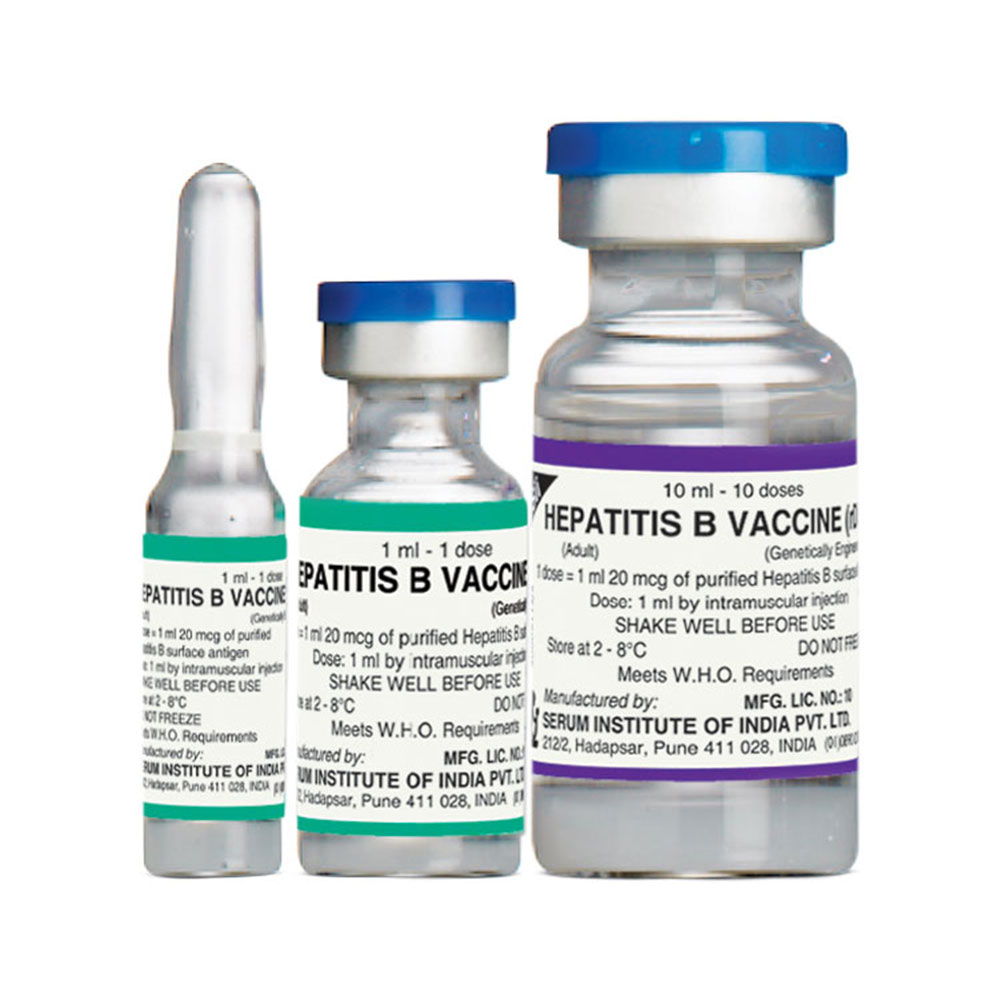
In conclusion, infections hepatitis b vaccines are a cornerstone of global public health initiatives. The effectiveness of these vaccines in preventing chronic infection and reducing transmission rates is undeniable. By understanding the intricate details of hepatitis B infections, vaccine mechanisms, and administration protocols, we can better appreciate the profound impact of vaccination programs on individual and community well-being.
The future of hepatitis B prevention relies on continuous research, improved vaccine accessibility, and a global commitment to comprehensive vaccination strategies. Let’s continue to advocate for the widespread use of these crucial preventative measures.


